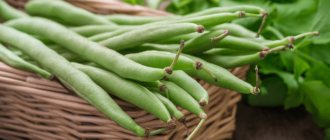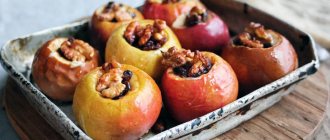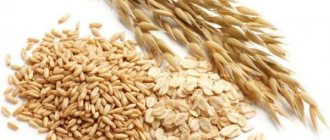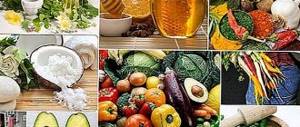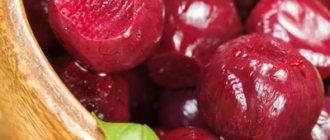Use for inflammation of the pancreas
If you do not follow the recommendations for the use of fruits for a disease such as hyperacid gastritis, then there may be unwanted complications.
So, if you eat sour fruits, you can cause an exacerbation of the pathology. There may be epigastric pain, cramps, nausea and other negative symptoms. If you eat fruits without recommendations on when to take them, you can also cause undesirable effects in the gastric mucosa. To achieve a balance between the need to consume fruits and their possible negative impact on the walls of the irritated organ, it is necessary to take into account the properties of each type of fruit.
The main goal of the diet for this pathology is to exclude the consumption of food that has an irritating effect on the gastric mucosa, to prevent the consumption of difficult-to-digest foods, and also to introduce restrictions on food that increases the secretion of hydrochloric acid (for gastritis with high acidity).
Many fruits are prohibited precisely because of their high concentration of acids, which is typical for the citrus family. Some fruits are not recommended for consumption for another reason - because of the coarse fiber that forms their basis.
The overseas fruit has excellent taste, which can be compared to a pear in the stage of incomplete ripeness or pumpkin. Avocados contain virtually no acids, so there are no contraindications to consuming this fruit. If you have gastritis, any foods should be eaten in moderation; this rule also applies to avocados - although it is recommended to include it in an antigastritis diet, it should not be abused.
The acute phase of the disease is an absolute contraindication to eating avocados in any form - the fruit is too high in calories and fat for therapeutic nutrition during this period.
Patients with inflammation of the pancreas can remember about avocado only 6-8 weeks after the exacerbation phase, provided they feel well. The fruit should be introduced gradually, a teaspoon of pulp daily, bringing the portion to 100 g, which corresponds to half a medium-sized fruit. The absence of pain, flatulence and diarrhea serve in this case as confirmation of the normal tolerance and digestibility of avocados.
Patients with pancreatitis can use this exotic product:
- beat the pulp into a puree;
- adding pieces to vegetable and fruit salads;
- combining with seafood and fish:
- as a side dish for meat;
- baking in slices.
If the diagnosis of “pancreatitis” was made once, then in order to avoid relapses of the disease in the future, you must always adhere to a healthy lifestyle and diet, giving preference to vegetables and fruits, consuming some of them with caution, including avocados.
Experts decisively give a positive answer to the question that interests many readers: “Is it possible to eat avocados with gastritis?” Why? It belongs to the category of medicinal fruits, which tend not only not to complicate the disease process, but also to facilitate it.
In the course of research, experts noted that avocados have a positive effect on the gastrointestinal tract, and accordingly, can be useful in the treatment of a disease such as gastritis.
If you eat one piece of fruit every day, this will significantly affect the entire functioning of the gastrointestinal tract. This product has an antibacterial effect and also effectively fights all harmful bacteria inside the stomach.
It is impossible not to note the extensive chemical composition of avocados, which can even be compared with vegetables, which is incredibly useful for all types and forms of gastritis. If a person has a number of problems with cholesterol, then this fruit can also help him by introducing it into his daily diet.
Experts cannot say anything about the high calorie content of avocado, since for gastritis this fruit should be consumed in a strictly established norm.
- 1Basic principles of nutrition
- 2Approved products
- 3Proper nutrition
- 4Fruits, berries, vegetables
- 5Drinks
- 6Prohibited products
1Basic principles of nutrition
By adhering to a certain diet, you can forget about gastritis and its symptoms. If you ignore medical advice, a chronic disease will turn into an acute one, and then into a peptic ulcer.
It is very important not only what foods you eat, but also how you do it. Here are some rules for eating with this disease:
- meals should be fractional - in small portions at least 5 times a day;
- food should be taken every 3-4 hours;
- breakfast, lunch and dinner should take place at the same hours;
- do not deprive yourself of breakfast, giving preference only to juice or tea;
- dinner should be no later than 3 hours before bedtime;
- Conscientious chewing of food is very important;
- You need to eat hot liquid meals every day;
- do not eat while running or on dry food;
- drink 30 minutes after meals so as not to dilute gastric juice;
- do not drink alcohol, spicy, fatty, fried foods, coffee, carbonated drinks;
- quit smoking;
- cook only from fresh products, and store ready-made dishes as expected.
If you follow these rules, health problems can be avoided. You need to switch to this diet gradually.
2Approved products
How to find out what you can eat if you have gastritis? First you need to be examined to know exactly what acidity of your gastric juice is - high or low, because your diet depends on this.
3Proper nutrition
How to use it correctly?
Before eating an avocado, you need to wash it thoroughly and wipe dry .
- Then, using a sharp knife, cut the flesh around the circumference of the fruit, as if trying to cut it in half. At the same time , try not to damage the bone !
- Grab both halves and forcefully turn them in different directions.
- Take out the bone.
- Scoop out the pulp with a spoon.
You can pre-cut it with a knife (right in the peel) into small cubes to immediately add to a salad or any other dish. For example, we recommend trying it with cheese and chicken.
On our website: What soups can you eat for gastritis - dietary recipes
Salad recipe with cheese and chicken
You will need: 1 head of green salad, 1 avocado, ½ boiled chicken breast, feta cheese, pitted olives, olive oil, salt.
How to cook:
- Cut the boiled breast, cheese and avocado into cubes.
- Tear the lettuce leaves into large pieces with your hands.
- Mix all ingredients, season salad with olive oil and salt.
- Decorate with olives.
- Can be served.
Video about the benefits of avocado
Fruits that are useful for low acidity are discussed separately.
Grape
Grapes are tasty and healthy in late summer and autumn. Many people are interested in whether people with gastritis can eat grapes.
- Gastroenterologists do not recommend grapes to patients with gastritis. This is a heavy product. Eating berries with stomach pathologies leads to unpleasant symptoms: acid in the stomach begins to be produced in large quantities and irritates the mucous membrane.
- For gastritis with low acidity, patients drink grape juice. The product has an antimicrobial effect, increases juice secretion and relieves inflammation.
- Grapes in their pure form are allowed during periods of remission. It is recommended to consume green varieties in moderation.
Kalina
Viburnum treats gastritis with low acidity. An infusion is prepared from the berries and taken before meals. This stimulates digestion by increasing the production of gastric juice.
If acidity is high, other fruits are allowed.
Pear contains many vitamins and microelements, tannins. It has a strengthening and anti-inflammatory effect, so it is useful for diarrhea.
Pears for gastritis are included in the diet, but the type of disease must be taken into account. Not recommended for low acidity.
For gastritis, pear is useful if the acidity in the stomach is higher than normal. You should not eat the fruit on an empty stomach: it is eaten after meals. You need to choose a ripe soft fruit; it is better to remove the hard peel. Pear juice will be helpful.
Doctors do not recommend consuming fresh fruit during an acute period of the disease, but baked pears are included in the diet.
A pineapple
Pineapple reduces the level of acid in gastric juice: the fruit can be eaten with gastritis with elevated pH. It is recommended to consume only fresh fruit. Canned pineapple does not have the same beneficial properties.
The beneficial effect of certain fruits on the stomach with increased secretion of digestive juice is explained by their composition. They contain many useful substances:
- vitamins and microelements that help restore damaged mucous membrane of the gastric walls;
- organic acids that improve metabolic processes; they also prevent the proliferation of pathogenic microbes on the walls of the stomach;
- vegetable fiber, which promotes more active digestion of food;
The whole complex of substances helps strengthen the body’s immunity as a whole.
Contraindications
You can only eat sweet fruits, which have undergone heat treatment and in pureed form, in the form of jelly, mousse and jellies.
The alligator pear, or avocado, is the fruit of a fast-growing evergreen tree, which is considered to have originated in Mexico. On the European continent, an exotic product appeared relatively recently - in the middle of the last century - and quickly became widespread.
The composition of this fruit is very diverse. Its fruits are rich in:
- fats, proteins, carbohydrates, fiber;
- organic acids, including oleic acid, which is responsible for reducing total cholesterol levels in the blood;
- microelements such as iron, phosphorus, iodine, boron, manganese, fluorine, sulfur, cobalt, calcium, potassium, magnesium, aluminum, sodium, chlorine, zinc, copper;
- vitamins A, B2, B3, B5, B9, E, K, C.
In terms of riboflavin B6 and thiamine B1 content, avocado surpasses all other fruits, and in energy value it surpasses eggs and meat.
The healing properties of the exotic fruit are:
- normalization of the digestive and cardiovascular systems, the thyroid gland;
- improving memory;
- increased production of red blood cells;
- preventing the development of malignant neoplasms;
- strengthening the immune system.
Avocado is effective for:
- diabetes mellitus and gastritis;
- anemia and vitamin deficiency;
- atherosclerosis and hypertension;
- constipation and stomach catarrh;
- dyspepsia and secretory insufficiency.
Avocado is an evergreen fruit tree that is native to Mexico and South America. Today it can be found in most regions of Europe. The fruit has an oval or round shape, a smooth, slightly wrinkled peel, delicate green flesh, and a large brown seed.
Avocado has the wonderful property of ridding various human organs of a number of diseases.
Doctors note that with regular consumption of exotic fruit, blood pressure normalizes, metabolism and the functioning of the gastrointestinal tract return to normal. Avocado is highly effective when included in most dietary menus prescribed for certain diseases.
16.02.2017
Gastritis of the stomach is caused by the microbe Helicobacter pylori and many other factors. The main ones are an unbalanced diet, non-compliance with the daily routine, abuse of harmful foods or frequent stress.
Therefore, during treatment, a diet is necessary that will speed up recovery and eliminate the very cause of the disease. When building a nutrition plan, pay attention to the choice of vegetables, because depending on the level of acidity, their list will differ significantly.
Table of contents
With an increased level of acidity, the secretion damages the gastric mucosa. To minimize this problem, do not eat vegetables raw. It is advisable to boil them and grind them on a fine grater before eating. Also avoid rough foods, strong coffee, tea, alcohol, and sweets.
If there is an exacerbation, go on a lean diet for a week and cook dishes exclusively with water without adding salt or seasonings. During this period, drink at least two liters of water to allow the damaged organ to recover. As symptoms subside, introduce other foods while closely monitoring your condition.
Fruits are a storehouse of vitamins and beneficial microelements that have a beneficial effect on human growth and development, improve physical and mental performance, increase immunity and, as a result, a person gets sick less.
Unfortunately, only absolutely healthy people can receive all the benefits described above. Those who are less fortunate should be very careful about what fruits they can eat if they have gastritis.
Table of contents
There are two types of gastritis:
- with high acidity;
- with low acidity.
This means that a person should choose fruits in his diet consciously, based on the form of his disease.
What fruits can you eat for gastritis of any type?
If the inflammatory process in the stomach is hyperacid, patients must use acid neutralization methods. Young potato juice works great for this. Among fruits, it is better to give preference to bananas, pears and pineapples.
Increased stomach acidity
With increased acidity, the goal of prevention is to reduce or normalize the secretion of acid in the stomach. An indispensable remedy in the treatment of gastritis is potato juice. The product contains starch, which envelops the mucous membrane, protects against irritation, and relieves pain and heartburn. Fresh potatoes are wiped, the juice is squeezed out and immediately used as medicine. Take 150 ml 3 times a day for a course of 10 days. For stomach illnesses, potatoes are useful in any form (baked, boiled, steamed), but the dish is better digested in the form of puree.
For people with high acidity, the following foods should be excluded:
- red tomatoes;
- Bulgarian pepper;
- white cabbage;
- spinach;
- cucumbers
With increased secretion of the organ, all vegetables are eaten after heat treatment. The best choice for preparing the dish is boiling, stewing and baking. Roasting of fruits is not allowed.
Onions are prohibited for consumption if you have a stomach illness, but you can still eat them boiled.
Pumpkin is called a universal vegetable. It can be eaten for gastritis with any level of acidity. It is easily absorbed and digested without irritating the walls of the stomach. The vegetable is rich in carotene and contains potassium, copper and zinc. Pumpkin juice is indispensable for increased secretion of the organ. It strengthens the immune system, increases bile secretion, and improves the functioning of the intestinal tract. A steamed dish does not lose its valuable substances.
Contraindications
Although the benefits of fruits for the body are undeniable, the action of organic acids and essential oils, which are strong irritants of the secretory activity of this organ, is still undesirable for the stomach with inflamed walls. What are the indications for eating fruits for hyperacid gastritis? Of course, when prescribing them, it is necessary to approach each specific case individually.
When including certain fruits in your diet, you need to know complete information about them and their effect on the gastric mucosa.
Food poisoning in adults and children.
Selecting vegetables by color
The color scheme of the plants will help you decide which vegetables are good for gastritis. The color of the fruit characterizes the presence of certain vitamins in it.
Yellow and orange crops contain beta-carotene, which is an antioxidant that can reduce inflammation in the stomach lining.
Red vegetables are highly acidic and have an irritating effect on the walls of the organ.
Green fruits provoke the production of gastric juice, which is not desirable for acute gastritis. Such vitamins should be consumed only after heat treatment.
Purple vegetables can neutralize hydrochloric acid, so they are necessary for people with high stomach acidity.
White fruits should be the basis for your diet. However, fresh cabbage and turnips are an exception and are not recommended for use with gastritis.
For all types of gastritis it is necessary to exclude the following products:
- garlic;
- radish;
- sorrel;
- spinach.
These vegetables stimulate the gastric glands in the mucous membrane. If you really want to add a product to food, you need to heat it.
If you have gastritis, you need to eat often and avoid fasting. You should definitely avoid fried, spicy and smoked foods. You should not consume products containing alcohol and acidic concentrates. It is necessary to often be in the fresh air, lead a healthy lifestyle and avoid stressful situations.
In the 21st century, in a hurry to do a lot, people forget about health. Snacking on the run, poor-quality food, eating food harmful to the body, stress, bad habits - this is not a complete list, which is among the factors affecting the gastrointestinal tract in particular and the general condition in general.
This happens due to a superficial perception of the state of health. People justify their own inattention by the lack of free time. The justification is not always fair.
The effect of the above factors on the gastrointestinal tract results in a simultaneous exacerbation of gastritis and pancreatitis. Only a properly formulated and selected diet for a specific case for pancreatitis and gastritis will help normalize the digestion process.
Why is this fruit dangerous?
The undoubted benefits of alligator pear absolutely do not serve as a complete guarantee of the safety and harmlessness of its use.
Although this product is included in many therapeutic tables and diets, with a disease such as pancreatitis, its use should be limited due to its high fat content.
Despite the fact that avocado fats are considered healthy, taking them in large quantities can harm a damaged pancreas. An excess of fiber, which this fruit is rich in, can cause bloating and, as a result, lead to an exacerbation of the disease.
In addition, the seeds of this fruit contain toxins, the consumption of which can cause a severe allergic reaction or disruption of the functioning of the entire digestive system. Avocado is also not recommended for people with individual intolerance.
With low acidity
In the case of low acidity, the stomach produces little acid, so the food is not completely digested and in this form enters the intestines, where the processes of fermentation and rotting can begin. Therefore, you need to eat those fruits that will stimulate the activity of the stomach. Baked apples have these properties. Also cherries, apricots and plums, which are undesirable to eat fresh - it is better to use them for making jelly, puree, jelly, and compotes.
Among the berries, it is recommended to eat cranberries and lingonberries. Berries with large seeds and rough skin should not be eaten. You can have citrus fruits in your diet, but first you should check your individual tolerance.
Chronic gastritis. What kind of fresh fruit can I have?
When the disease becomes chronic, it means that either it was neglected or there was no effective treatment and diet. In this case, fresh fruits should be consumed with extreme caution and, of course, in fractions.
For chronic gastritis, you should avoid sour berries. Let's now look at how fruits affect the stomach of a person with this disease:
- Sweet apples. For any form of disease, these products are allowed. Their number should be limited in case of a chronic illness, as well as during an exacerbation. Moreover, you should eat them only in grated form, without the skin.
- Banana. This fruit has a softening effect. Banana gently envelops the mucous membrane. It also prevents irritation before taking medications or foods with irritants. Therefore, it is useful to eat a piece of banana before eating. About ten minutes before eating. In this way, intestinal vulnerability can be reduced.
- Pears. Doctors consider this fruit a real panacea. Pear strengthens the walls of the stomach and tones them. The fruit has an astringent effect. It contains a lot of pectin and vitamins. Pear has a positive effect on peristalsis, stimulating it. A couple of fruits a day is good for health.
- Persimmon. Thanks to its viscous composition, it is useful for those diagnosed with gastritis. It is worth eating ripe fruits.
- Berries. It should be used as part of jelly and jelly. Fruits with small seeds, as we have already said, should be discarded.
Dish recipes
There are several interesting breakfast and lunch options for gastritis with high acidity. For gastritis with high acidity, dietary recipes are varied. The most popular dishes are described below.
Potato and spinach soup, which is also one of the most delicious dishes, will be very useful and nutritious for a patient with gastritis. Its ingredients include:
- 1 bunch of spinach, washed, peeled and cut into pieces (350 g);
- 1 liter of vegetable broth;
- 1 medium potato, sliced;
- 2 tablespoons oil;
- 1 peeled tomato;
- 1 onion;
- sea salt to taste.
Heat the oil over low heat, fry the potato pieces, spinach, tomato and chopped onion, add salt.
Next, you need to mix a little sauce with vegetable broth, then pour the mixture into a saucepan and bring it to a boil. It is recommended to eat this soup warm, not hot.
You can even cook and eat it for breakfast.
Another healthy dish is steamed rice with vegetables. Its ingredients:
- 3 cups washed rice;
- 5 and a half glasses of water;
- 2 tablespoons oil;
- 1 tablespoon olive oil;
- 1 lemon;
- cauliflower;
- spinach;
- broccoli;
- carrot;
- sea salt.
You need to boil water with oil and salt. When the water boils, you need to add rice. Next, put the vegetables in the steamer and leave them for 30 minutes.
After this, it is recommended to remove the vegetables and add olive oil to them, squeeze a drop of lemon juice and sprinkle with sea salt. You can serve the dish with boiled rice for breakfast.
For lovers of oatmeal products, there is a special dietary dish - oatmeal buns. They can be prepared for breakfast. Ingredients for this dish:
- 1 cup oats;
- 1 glass of soy milk;
- 1 tbsp. l. chopped parsley;
- 1 tbsp. l. tamari sauce;
- 1 egg;
- sea salt to taste;
- half a cup of whole grain bread crumbs.
To prepare the dish, you need to leave the oats in the milk for half an hour, then add the remaining ingredients and stir them until smooth.
If the dish is too dry, you can add a little soy milk.
If it is too light, you can add more bread crumbs or oatmeal. After this, you need to mix the mixture well, place it in parts on a baking sheet, and set the temperature to 180 degrees for 40 minutes.
You can serve the dish with steamed vegetable salad. These buns will be especially delicious served for breakfast with tea.
